News flash, America: your favorite Japanese dish isn’t as Japanese as you think. Ask any Japanese person if they think we’ve done a good job at recreating their traditional dish and chances are you’ll get a straight no.
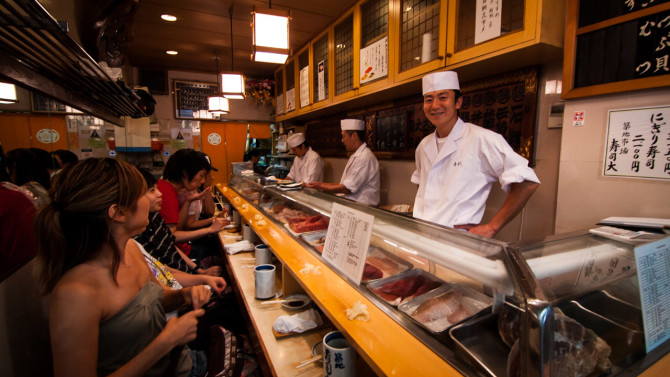
Photo courtesy of edeats.com
Here’s where we, America, went wrong.
1. Inside vs. Outside

Photos courtesy of tinyhandsonline.com and kosher-bite.com
Japan: The original sushi roll (Maki) consists of sushi rice and fish or vegetables wrapped in nori (seaweed).
America: To appeal to the western aesthetic, the traditional roll was flipped inside out. Americans like their rice on the outside and nori on the inside.
2. Simple vs. Complex
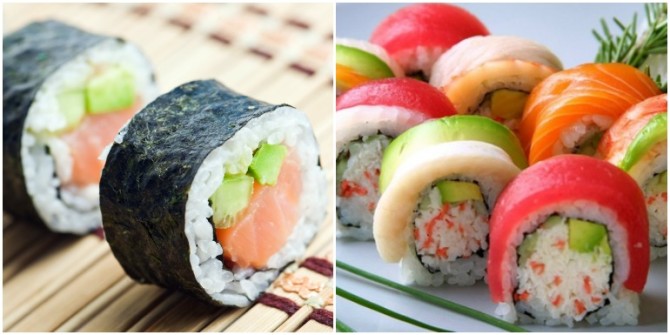
Photos courtesy of quora.com and house-sushi.com
Japan: Maki sushi is simple: seaweed, sushi rice, one type of fish, and maybe some vegetables inside.
America: Sushi rolls are jam-packed and topped with different types of fish, veggies and whatever else can fit inside the roll. Exhibit A: the Rainbow Roll – snapper, tuna, salmon, yellowtail, and avocado all wrapped around a California Roll.
3. Earning the “Sushi Chef” title
Japan: It takes 2-4 years of intense, stressful training to become a sushi chef. Before one can learn how to make a piece of nigiri sushi, he/she must learn how to properly cut the fish, make sushi rice and pair it with the perfect amount of wasabi. It takes two years to become a level 5 chef. To achieve the highest rank, level 1, many more years of training are needed.
America: Culinary schools, as well as cooking stores offer sushi making classes where you can learn how to make American sushi. It takes only 3 months to complete the Beginner and Advanced courses from the Sushi Institute of America. After completion, only a certificate is awarded.
4. Sushi Rice vs. Brown Rice
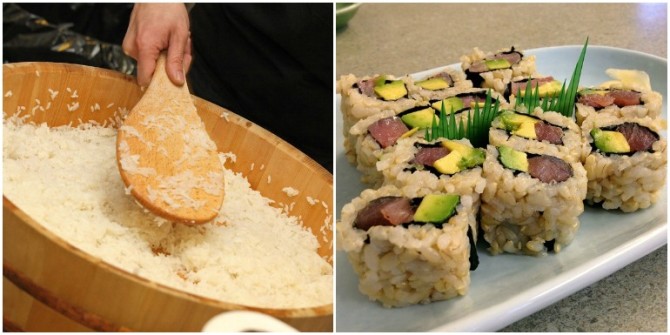
Photos courtesy of learnhowtomakesushi.wordpress.com and foodspotting.com
Japan: Sushi literally translates to vinegar rice. Sushi rice is a smaller white grained rice seasoned with vinegar, sugar and salt. It takes time and a specific temperature to create perfect sushi rice.
America: In order to attract health nuts, sushi restaurants introduced brown rice as a substitute for the necessary white sushi rice.
5. Small vs. Large (and Extra Large)

Photos courtesy of palmathaisushi.com and yelp.com
Japan: Sushi is usually a one-bite kind of food. A typical roll consists of 6 small pieces.
America: Sushi rolls are quite large in America. Orders usually contain 8+ pieces of a large roll. They also come in a larger size (hint: the sushirrito).
6. Flavor Balance
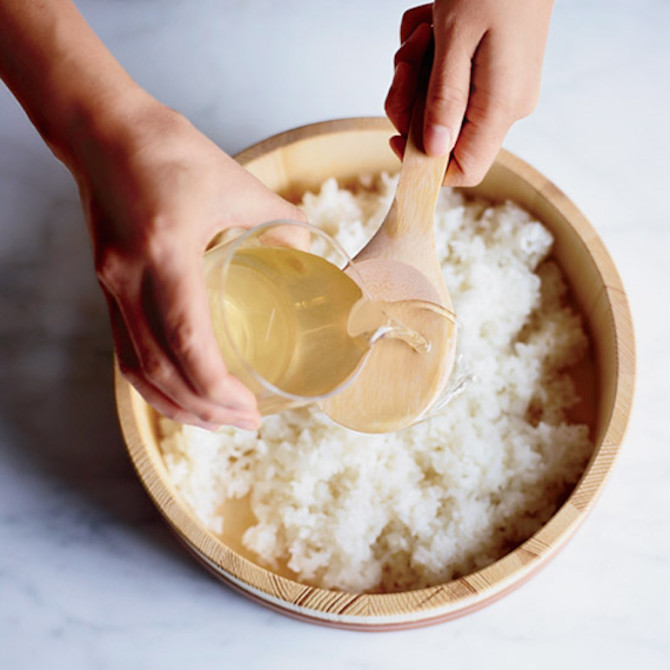
Photo courtesy of foodandwine.com
Japan: The balance between the flavors of sushi rice and fish are very important in Japanese sushi. You want to be able to taste both flavors in each bite.
America: American sushi rice lacks the vinegary flavor that Japanese sushi rice is known for. A lack of balanced flavors hints at improperly prepared sushi. Tisk, tisk.
7. Rolls vs. Cones
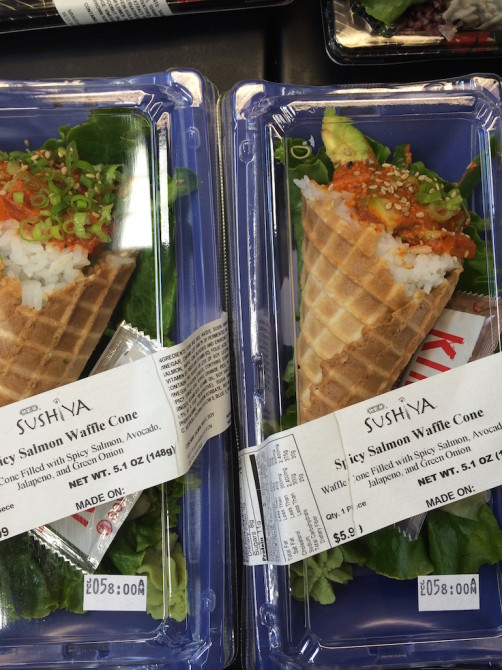
Photo by Hannah Cooper
Japan: A hand roll in Japan is cone-shaped but still made with nori.
America: Grocery store sushi stations and some restaurants incorporate waffle cones into their “hand rolls.”
So next time you think about going to a sushi restaurant here in the United States, do some research and find a traditional Japanese restaurant. You’ll thank me later. If you still don’t believe me, check out this chef’s review on our American sushi.


